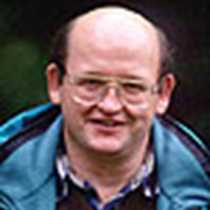Hells Canyon & Clearwater River
Bright blue partially cloudy skies greeted us this morning. Part of our group headed off to dig deep into Lewis and Clark and Nez Perce history by traveling the lower part of the Clearwater River to Kamiah. Kamiah was the site of extended stays by the Corps of Discovery. They stayed at the site, both seaward bound in 1805 and again going upstream in 1806. The group visited Treaty Camp and saw where the Expedition cached supplies in the fall of 1805 for recovery and used on the way back in spring 1806. Lin Laughy, Miguel Inzunza and guests relived the Clearwater journey by stopping at the camps, river crossings, canoe building site and other points on the Clearwater. The journey was completed when we met the jet boat folks for a visit to the Nez Pierce National Historical Park to view the Spalding collection and other Native American artifacts.
The other portion of our group navigated the Snake from below Lewiston/Clarkston area to the mouth of the Salmon River. Lewiston, Idaho and Clarkston, Washington are at the confluence of the Clearwater and Snake Rivers. We passed a log chipping facility for paper and fiberboard production, one of the last lumber mills in the area and Lewiston/Clarkston before reaching the free-flowing section of the Snake River near Asotin, Washington. Points of interest on the way up included spectacular columnar basalt cliffs, steep mountains and rapids that our jet boat navigated with ease. These boats can carry 60 guests and navigate in as little as 12 inches of water. The craft is flat bottomed and propelled by two 400 horsepower jet engines that pull water in and reject it out the back. In other words – we get up and fly across the water and up the rapids.
We were fortunate enough to see four groups of Bighorn Sheep. The sheep have been reintroduced to Hells Canyon after being eliminated by disease spread by domestic sheep during the late 1800s and early 1900s. The Oregon, Washington and Idaho Department of Fish and Wildlife have cooperated to make sure the reintroduction was successful. The surrounding terrain was brown from summer sun which helped accentuate the layers and outcroppings of basaltic rock. There were a few spots in the canyon where granite has been exposed.
The day was capped off with a short video and explanation of the Bretz Flood, a series of catastrophic ice age floods which carved and exposed the geologic features we will see tomorrow in the Palouse River Canyon.
Bright blue partially cloudy skies greeted us this morning. Part of our group headed off to dig deep into Lewis and Clark and Nez Perce history by traveling the lower part of the Clearwater River to Kamiah. Kamiah was the site of extended stays by the Corps of Discovery. They stayed at the site, both seaward bound in 1805 and again going upstream in 1806. The group visited Treaty Camp and saw where the Expedition cached supplies in the fall of 1805 for recovery and used on the way back in spring 1806. Lin Laughy, Miguel Inzunza and guests relived the Clearwater journey by stopping at the camps, river crossings, canoe building site and other points on the Clearwater. The journey was completed when we met the jet boat folks for a visit to the Nez Pierce National Historical Park to view the Spalding collection and other Native American artifacts.
The other portion of our group navigated the Snake from below Lewiston/Clarkston area to the mouth of the Salmon River. Lewiston, Idaho and Clarkston, Washington are at the confluence of the Clearwater and Snake Rivers. We passed a log chipping facility for paper and fiberboard production, one of the last lumber mills in the area and Lewiston/Clarkston before reaching the free-flowing section of the Snake River near Asotin, Washington. Points of interest on the way up included spectacular columnar basalt cliffs, steep mountains and rapids that our jet boat navigated with ease. These boats can carry 60 guests and navigate in as little as 12 inches of water. The craft is flat bottomed and propelled by two 400 horsepower jet engines that pull water in and reject it out the back. In other words – we get up and fly across the water and up the rapids.
We were fortunate enough to see four groups of Bighorn Sheep. The sheep have been reintroduced to Hells Canyon after being eliminated by disease spread by domestic sheep during the late 1800s and early 1900s. The Oregon, Washington and Idaho Department of Fish and Wildlife have cooperated to make sure the reintroduction was successful. The surrounding terrain was brown from summer sun which helped accentuate the layers and outcroppings of basaltic rock. There were a few spots in the canyon where granite has been exposed.
The day was capped off with a short video and explanation of the Bretz Flood, a series of catastrophic ice age floods which carved and exposed the geologic features we will see tomorrow in the Palouse River Canyon.




